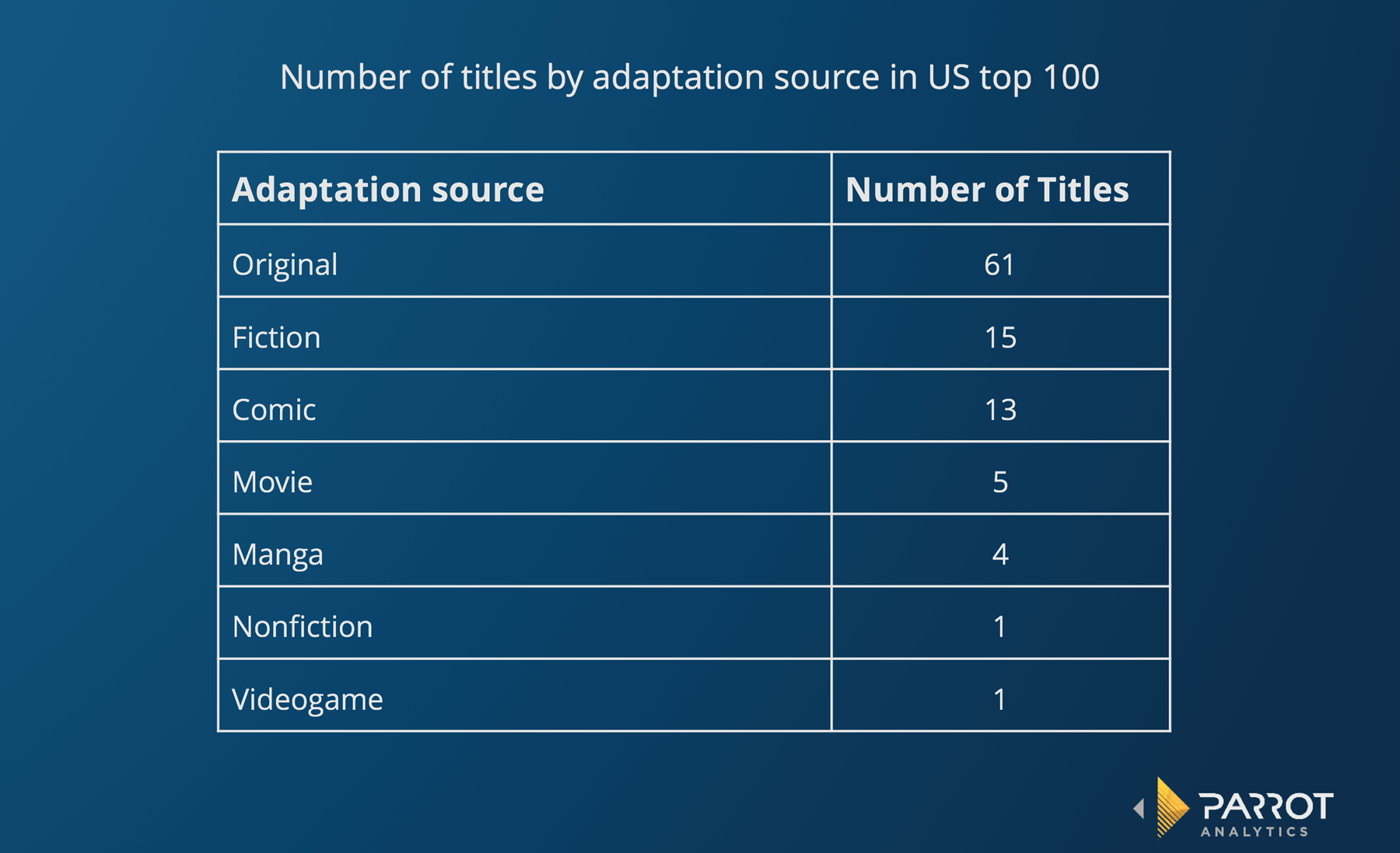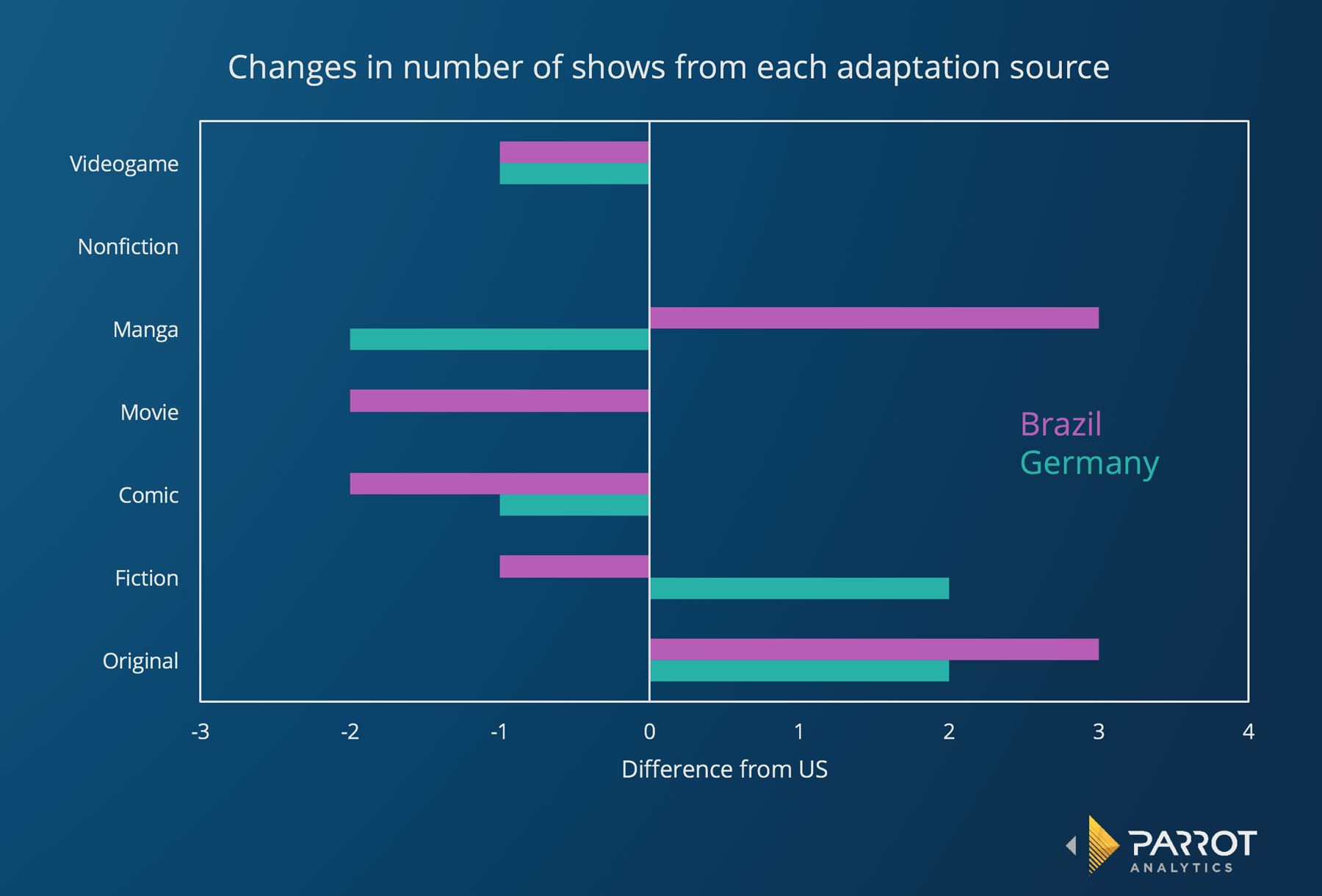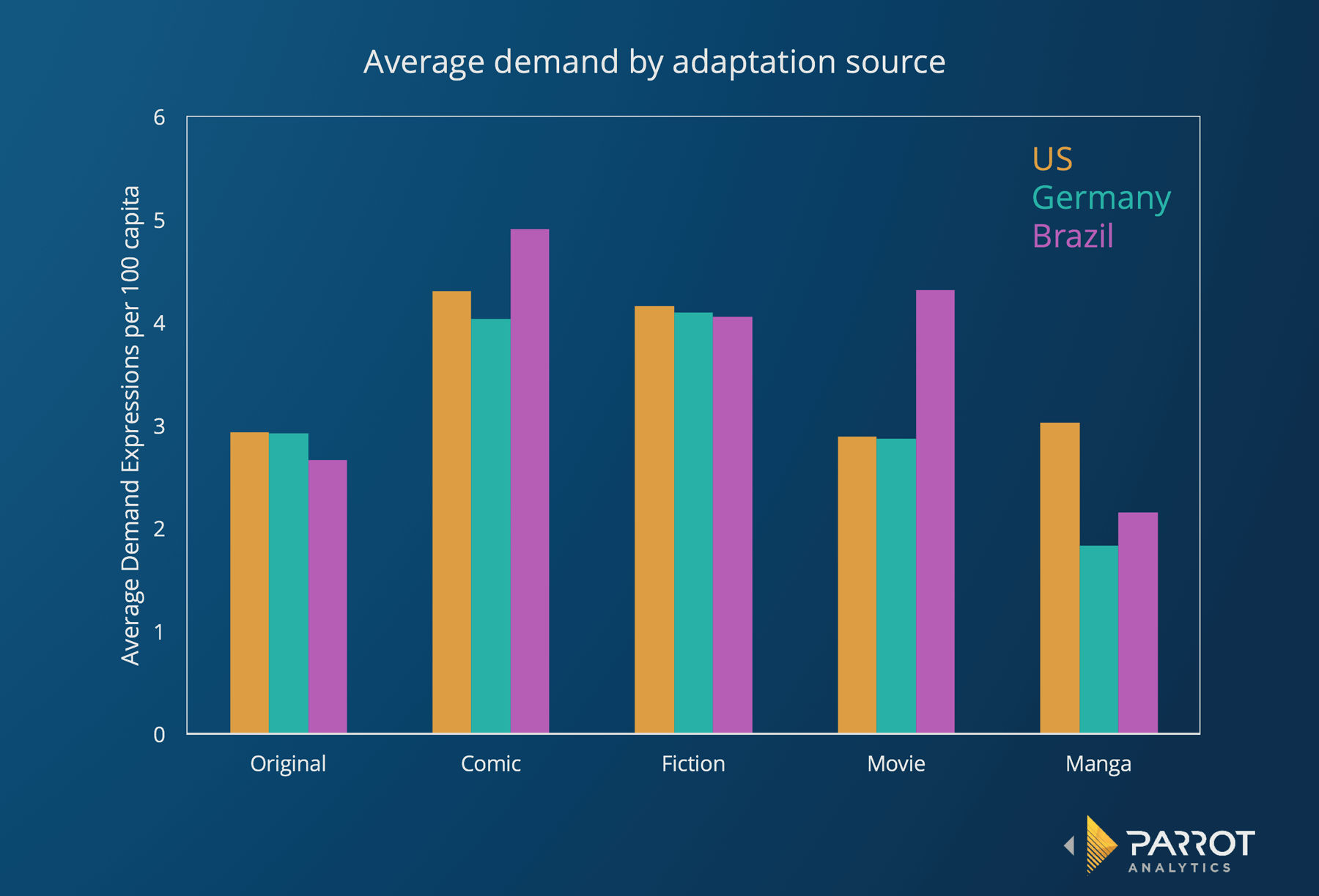While seeing original stories is great, no-one can deny the appeal of TV shows that are adaptations of an existing story. Whether that’s a best-selling novel, a beloved comic book, a cult film or an intriguing biography, it seems like everyone wins with an adaptation: Producers get a built-in audience and fans get another exploration of the characters they love.
But just how strong is this benefit?
We decided to look at this question by taking the 100 most in-demand titles over the summer in the US and analyzing these based on the source material they were adapted from. The categories for sources is as follows:
- Fiction works like novels, short stories, etc.
- Books of non-fiction like biographies
- “Western” comics
- Manga, or Asian comics
- Movie adaptations and shows set in film universes
- TV shows adapted from videogames
- Finally, series that weren’t adapted at all and are original to TV.
We’re only considering the original source of the adaptation; if a work was a novel, then a film, then a videogame of the film and finally made into a TV show, then we’re counting it as “fiction”!
We’ll start by seeing just what the most common types of adaptation are in the US top 100:
It turns out that the most common type of show by far is those that are original to the television as there are 4 times more of these than the most popular type of adaptation!
The most common type of adaptation is novels or other literary works of fiction, with 15 such TV shows in the list. These include some of the best-known shows around like HBO’s Game Of Thrones, Netflix’s 13 Reasons Why and Hulu’s The Handmaid’s Tale.
Following this is works adapted from comics, with 13 examples of these in-demand in the US. Titles range from the super heroics of Marvel and DC shows like ABC’s Agents Of S.H.I.E.L.D. and The CW’s Legends Of Tomorrow to grittier fare like AMC’s Preacher.
Movies are the next biggest source of adaptations, comprising 5 entries in the top 100. This category fits in shows such as A&E’s Psycho-based Bates Motel and MTV’s Teen Wolf, based on the film of the same name.
Manga inspires a lot of popular anime series like Attack On Titan (aired on Adult Swim in the US), 4 of which are popular enough in the US to make this list. There’s a single nonfiction entry in this list as Netflix’s Orange Is The New Black is based on an autobiography. Finally, Netflix’s Castlevania is the sole show that was based on a videogame.
Next, let’s investigate how this changes in the top 100 shows for some other countries. Picking Brazil and Germany as our two examples, this next chart shows how the makeup by adaptation source changes compared to the US numbers:
The exact composition of the titles in the list in each country changed a lot: across all three of the top 100s there were 112 shows that were unique to just one country. Despite this, the proportion of each adaptation type stayed reasonably steady across the board, with the biggest change for any category being only 3 shows.
From this, we learn that:
- The US is the only country that had a videogame based tv show in its top 100 shows; neither Germany or Brazil liked Castlevania enough for it to rank.
- Germany had more original shows than the US, as well as more shows based on fiction. However, shows adapted from manga and comics were less popular.
- Compared to the US, the Brazilian love of telenovelas and anime drove gains in the original and manga categories respectively. However, the country was less enthused about comic and movie based shows.
- Nonfiction remained the same across all three countries, with the same show appearing in each top 100 (Orange Is The New Black).
Let’s dive deeper into the data now and examine how each adaptation type compares when average demand is considered:
One source is very consistent across countries: the appeal of fiction adaptations is almost identical in all three countries. Fiction demand is not only consistent but the second highest of all sources. This indicates that TV shows that are adaptations of fiction are the most consistently popular.
The highest average demand for a source is for comic adaptations. The highest demand in this category is a little surprising, as Brazil has the highest average demand of all countries even though it had less shows in its top 100 than the US.
Average demand for original shows is about the same for the US and Germany but decreases slightly in Brazil. This is likely due to the high proportion of telenovelas in the Brazilian top 100; as shows are continuously airing, telenovelas sustain a high average consistently, but lack the big demand peaks of season-based dramas.
Movies and manga show comparatively large variations between countries, but these categories have very small sample sizes, given that this analysis only considers 100 shows, so this is likely to be simply a direct result of demand for the specific shows charting in each country.
As they only have a single data point at most, nonfiction and videogame adaptations have been excluded.
By the numbers then, if you’re a TV producer and you want to adapt a show you should probably pick a novel or comic. However, the beauty of the creative industry is that really, any individual show can be a breakout hit regardless of what the averages say!
In fact, we’re likely to keep seeing adaptations from not just these sources, but potentially new forms of media in the future as the industry searches for the next big blockbuster.




